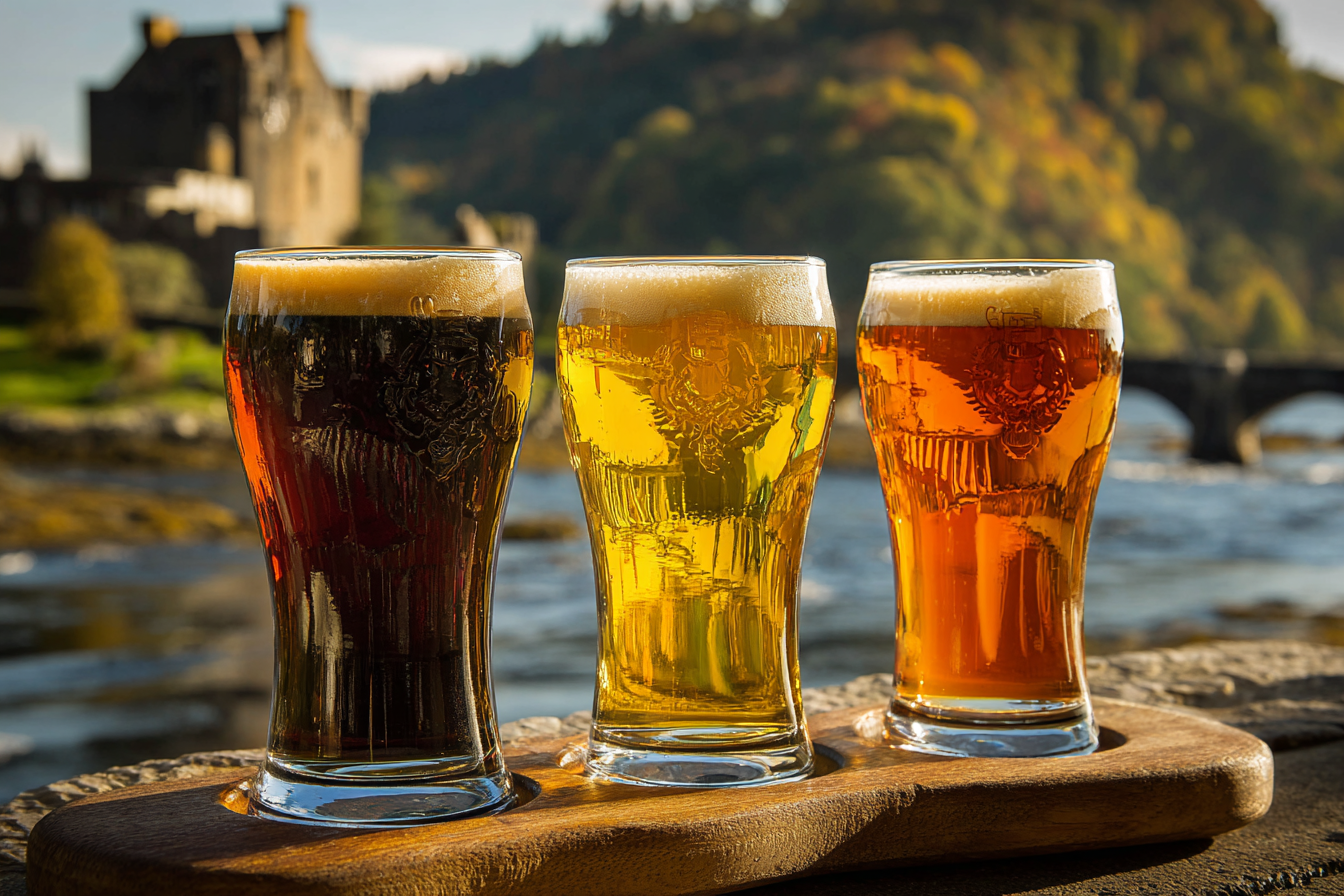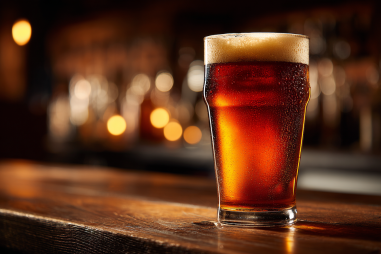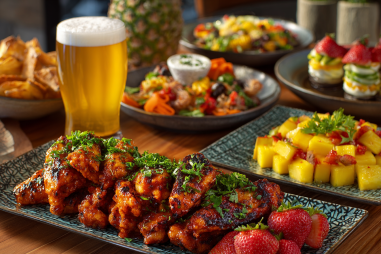Scottish Ale is a beloved category among beer enthusiasts, known for its rich history and distinct characteristics. Far from being just a single style, Scottish Ale encompasses a variety of beers that range from light and mild to robust and heavy. Each variant offers a unique experience that highlights different strengths, flavors, and brewing traditions. Whether you are new to the world of Scottish Ales or looking to deepen your appreciation, understanding the nuances among the light, heavy, and export styles can help you find the perfect brew for your palate.
An Introduction to Scottish Ale as a Beer Family
Scottish Ale originated in Scotland, where brewers have crafted this style for centuries using locally sourced ingredients and traditional methods. Unlike some other beer families that are defined by their hop intensity or fermentation techniques, Scottish Ales are primarily characterized by their malt-forward profiles. They tend to emphasize caramel, toffee, and nutty flavors with relatively low hop bitterness. This malt dominance reflects the Scottish preference for smooth, drinkable beers that complement the cooler climate and hearty cuisine.
The beer family includes several variations, typically categorized by strength—light, heavy, and export. While the names might suggest differences in alcohol content alone, each style also possesses unique flavor nuances and mouthfeel profiles. This diversity means Scottish Ale fans can enjoy a range of beer experiences while staying true to the underlying malt character and traditional roots.
Overview of Light, Heavy, and Export Scottish Ales
The Scottish Ale family breaks down neatly into three primary styles, each with a spectrum of strengths and flavor expressions:
- Light Scottish Ale: The light style is often the mildest in alcohol and body. Typically ranging from 2.5% to 3.5% ABV, these beers are sessionable and easy-drinking. They showcase malt sweetness with hints of biscuit and gentle caramel but avoid overpowering heaviness. The light ale is an inviting choice for those new to Scottish beer or looking for a low-alcohol option.
- Heavy Scottish Ale: Heavies usually fall between 3.5% and 4.5% ABV. This style is richer and more robust than its lighter counterpart, offering deeper toffee flavors, sometimes paired with subtle hints of smokiness or earthy undertones. Heavy ales balance malt sweetness with moderate bitterness, creating a more complex yet smooth drinking experience.
- Export Scottish Ale: Export ales are the strongest, clocking in between 4.5% and 6% ABV, traditionally brewed for export markets. These beers are fuller-bodied and more intense in malt character, often marked by pronounced caramel, roasted notes, and sometimes a touch of dark fruitiness. Export ales bring warmth and complexity, making them a favorite among those craving a more substantial brew.
Flavor and Strength Differences Between Styles
The differences in alcohol content among Scottish Ale styles heavily influence their flavor profiles and drinkability. Light Scottish Ales tend to be mild and subtly sweet, with delicate malt flavors that make them highly accessible. They are often described as biscuity or bready, with a smooth texture and a clean finish.
Heavy Scottish Ales present a richer flavor profile. Expect to taste caramel, toffee, and gentle roast notes, along with a medium body that still retains some drinkability. The bitterness is restrained, allowing the malt to shine and creating a balanced taste perfect for cooler evenings.
Export Scottish Ales take malt richness to the next level. They have a denser mouthfeel and can include flavors like dark caramel, dried fruits (such as raisins or figs), and mild smokiness. The higher alcohol content contributes warmth and complexity, making exports satisfying sippers that pair well with hearty fare.
Traditional Brewing Methods for Each Style
Traditional Scottish Ales are brewed with a focus on malt complexity and balance rather than hop aggression. Scottish brewers historically used pale malts alongside specialty malts like crystal or roasted barley to build the characteristic caramel and toffee flavors. Low hopping rates were common, typically using softer water to ensure mild bitterness.
Each style requires adjustments in malt bill, yeast strain, and fermentation conditions:
- Light Scottish Ale: Brewed with lighter malts and a smaller malt bill to keep the alcohol and body low. Fermentation is carefully controlled to maintain a clean, mild profile.
- Heavy Scottish Ale: Incorporates a richer malt base with specialty malts contributing to flavor complexity. Yeast strains are selected for their ability to produce subtle esters that complement the malt character.
- Export Scottish Ale: Uses a larger proportion of specialty malts and sometimes extended mashing times to maximize fermentable sugars and deepen flavor. Fermentation may be slightly warmer to encourage more complex yeast character.
Traditional methods emphasize longer fermentation and conditioning periods, allowing flavors to meld smoothly. The water quality in Scotland, known for its softness, historically played a key role in the beer’s gentle bitterness and round maltiness.
Modern Interpretations and Craft Brewers’ Takes
While traditional Scottish Ales remain popular, many modern brewers have embraced the styles, putting creative spins on them. Craft breweries around the world now produce Scottish Ales that range from faithful recreations to innovative blends using unusual ingredients or techniques.
Some brewers experiment with hop varieties, adding subtle aromatic qualities without overpowering the malt forwardness. Others introduce barrel-aging, which can impart whiskey, oak, or bourbon notes, resonating with the Scottish heritage. Additionally, modern water treatment allows breweries outside Scotland to replicate the soft water conditions for authentic flavor profiles.
This new wave of Scottish Ales broadens the appeal of the style, introducing it to a wider audience while respecting its roots. Whether it’s adding slight smokiness, balancing sweetness with assertive bitterness, or raising alcohol levels beyond traditional ranges, craft brewers keep the Scottish Ale style fresh and exciting.
Food Pairings for Various Scottish Ale Styles
Scottish Ales are versatile beers with excellent food pairing potential. Their malt-focus and moderate bitterness make them complementary companions to many dishes:
- Light Scottish Ale: Pairs well with lighter fare such as salads, grilled chicken, seafood, and mild cheeses. Its crisp and mild character won’t overpower delicate flavors, making it a great choice for casual meals.
- Heavy Scottish Ale: Matches hearty dishes beautifully. Think roasted meats, stews, shepherd’s pie, or rich pasta dishes. The caramel and toffee notes enhance savory flavors while balancing richness.
- Export Scottish Ale: Perfect with bold flavors like smoked sausages, blue cheese, barbecued ribs, and game meats. Its fuller body and warmth help cut through fatty or intensely flavored dishes.
Besides meals, Scottish Ales also pair nicely with desserts featuring caramel, nuts, or dried fruits, providing a sweet, malty contrast.
Finding the Scottish Ale That’s Right for You
Exploring Scottish Ale styles opens up a rewarding world of rich malt flavors, diverse strengths, and traditions that span centuries. If you’re new to the style, starting with a light or heavy Scottish Ale offers an accessible introduction. For those who enjoy beers with depth and warmth, export ales provide a robust and satisfying experience.
Whether you prefer sessionability, complexity, or a bold malt-forward beer, the Scottish Ale family has something to offer. Modern craft brewers continue to innovate within this style, so keep an eye out for new versions that might surprise and delight your taste buds. Next time you’re selecting a beer with malt character, give a Scottish Ale a try—you just might discover your new favorite brew.







